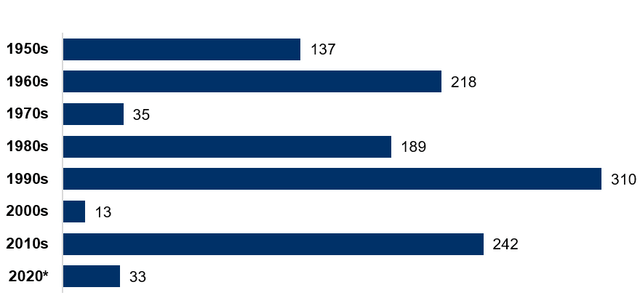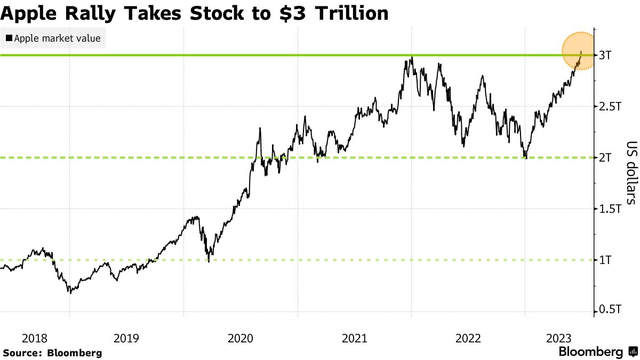By Andrew Prochnow
Typically observed around this time of the year, the Santa Claus rally has propelled the stock market upward in the final month. Recently, the Dow Jones Industrial Average achieved a new record high, with the S&P 500 and Nasdaq not far behind.
What’s this all mean for 2024? That’s not easy to predict, but it does appear likely that 2024 will be a more volatile year of trading. A big reason for that is the 2024 U.S. presidential election, which is slated for Nov. 5, 2024.
Another big x-factor in 2024 is the economy. Thus far, the U.S. economy has avoided falling into recession, but there’s no guarantee the country will avoid a recession next year. The European economy is already flirting with recession, which isn’t necessarily a good omen for the U.S. economy.
Considering that backdrop, some investors and traders may want to consider reducing their long exposure to the stock market at some point in the coming weeks and months-by either putting that money into bonds, or simply holding extra cash.
All-Time Highs and Positive Drift
In early October, few would have anticipated that the Dow would reach a new all-time high in December. During that period, the major market indices were grappling with a 10% correction. However, since hitting a bottom on Oct. 27, the stock market has experienced a significant rebound.
The recent positive momentum seems to be driven by the Federal Reserve’s recent pivot away from monetary tightening. Additionally, inflation is on a downward trend, and the job market remains robust.
The current situation suggests that the Federal Reserve has adeptly managed to balance controlling record inflation without jeopardizing the economy, at least for the time being.
And as evidenced by the Dow Jones’ recent all-time high, a feeling of euphoria appears to have overtaken the markets. But it’s important to keep in mind that all-time highs aren’t uncommon, especially since the stock market tends to exhibit “positive drift.”
In the context of the stock market, “positive drift” refers to the historical tendency of stock prices to exhibit an upward trend over time. According to data compiled by RBC Global Asset Management, the S&P 500 notched a fresh all-time high 1,130 times between 1950 and 2020, as illustrated below.
Bloomberg, RBC GAM. Data as of Jan. 1, 1950 to Dec. 31, 2020
As shown above, all-time highs in the financial markets are fairly common, much like 10% corrections. And in either case, active investors and traders are well-advised to have a plan in place for dealing with them.
Reducing Long Equity Exposure at All-Time Highs
Despite the existence of positive drift in the financial markets, short-term corrections occur frequently. From 2002 through 2021, the S&P 500 corrected by 10% in half of those trading years-sometimes more than once.
And according to research conducted by Charlie Bilello, the frequency of 10% corrections only increases as you expand the sample size. From 1928 through the present, Bilello found that “a 10% intra-year drawdown has happened every 1.6 years on average.”
That reality puts the current all-time highs in fresh perspective. At some point down the road, investors and traders will be faced with a much different environment than the one observed this December. But for the time being, there’s reason to believe that the current all-time highs could beget additional all-time highs.
According to data compiled by the Wall Street Journal, the stock market has historically produced some of its strongest returns (on average) during the period between the last Fed rate hike and the first Fed rate cut.
Looking back to 1990, stocks acquired at the onset of the “pause” (the period following the last rate hike but preceding the initial rate cut) have demonstrated an average return of 21%. This substantial outperformance might help elucidate the recent exuberance in the markets.
Kristy Akullian, a senior investment strategist at BlackRock, suggests that markets could exhibit strong performance during this “goldilocks” phase. Akullian emphasized, “we’re even more confident now that we’re in [the pause period], and so there is more urgency to start acting before the Fed does start to cut rates.”
Currently, the market anticipates the Fed to implement rate cuts at some point in Q2 2024, potentially leading to further upside in the stock market over the coming months.
However, predicting the market’s peak is challenging, and a correction is inevitable. Consequently, active investors and traders may consider reducing their exposure to stocks, particularly those approaching all-time (or 52-week) highs.
Examining Apple’s stock performance over the past couple of years illustrates the effectiveness of trimming positions at their peak and re-entering during a correction. Apple, a renowned American brand and one of the world’s most valuable companies, has seen its shares surge by approximately 375% in the last five years.
On Dec. 13, coinciding with the Dow Jones Industrial Average’s all-time high, Apple shares reached a new pinnacle of around $198/share, propelling the company’s market capitalization to just over $3 trillion. However, in 2022, Apple shares experienced a downturn. Peaking at $172/share in August 2022, they retraced to roughly $130/share in early January of the current year. Since then, Apple’s shares have rebounded by more than 50%.
Bloomberg
This example provides clear illustration that Apple shares have slumped previously, and will undoubtedly slump again at some point in the future. For this reason, investors in Apple-and other stocks that are peaking toward 52-week or all-time highs-may want to consider shaving a portion of their positions.
Parting Shots
By diminishing exposure to the stock market, investors and traders can amass a cash reserve, providing an opportunity to seize future corrections. Alternatively, market participants might consider allocating this additional capital to fixed-income assets, especially since bond yields are currently at multi-year highs.
For those fortunate individuals who do not foresee the need to access their long-term investments, maintaining full investment might be a viable strategy. Arguably, the value of shares in companies like Apple (using it as an example) is likely to increase over the next five years.
However, for others, it could be prudent to accumulate a larger cash reserve, particularly as major indices approach new record highs. This cash reserve can be reinvested when the market experiences a downturn, or it can serve as an emergency fund in case of unexpected events, such as job loss.
That’s not to say investors and traders need to divest at this moment. Historical data indicates that the stock market often produces attractive returns after the Fed stops raising interest rates. And if the rally continues, the breadth of the current upswing will likely broaden, pulling along other large cap stocks and even smaller cap stocks.
Under that scenario, more stocks could trend toward 52-week highs (if not all-time highs), ultimately providing even more market participants with the opportunity to reduce their long exposure in the stock market.
As always, each and every market participant must decide for themselves what’s best for their own unique outlook, approach and risk profile. But in the financial markets, investors and traders usually don’t regret taking profits.
Andrew Prochnow has more than 15 years of experience trading the global financial markets, including 10 years as a professional options trader. Andrew is a frequent contributor Luckbox Magazine.
Read the full article here


